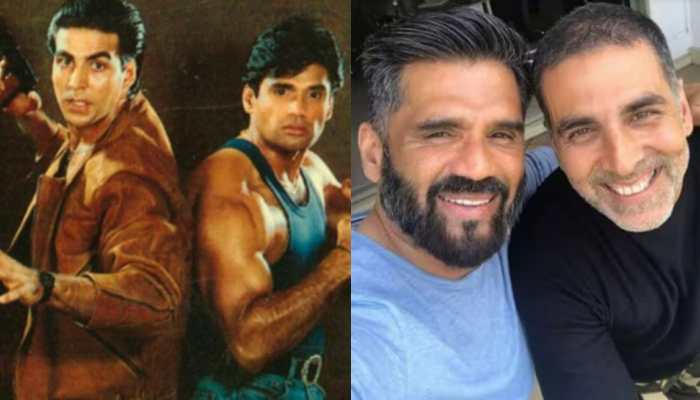Not enough doctors to treat mentally sick
The govt has estimated that the figure of mental illness in India is one-two percent.
Trending Photos
)
 Ankita Chakrabarty/ Zee Research Group
India may take solace in its relatively moderate mental illness level but appalling doctor to patient ratio for the disease has set alarm bells ringing. The World Health Organization (WHO) has estimated that one in four people will suffer mental health problems at some point in their lives but India has total of only 4,500 psychiatrists to serve its billion plus population.
The Health Ministry has estimated that the figure of mental illness in India is one-two percent. However, doctors said the level was pegged at 58 to 73 people per thousand.
The global health organization said less than $3 per capita per year was spent on mental health globally, while in poor countries the figure was as low as 25 cents. The WHO did not offer country-wise break up.
While the mental sickness curse has been spreading fast, the dearth of doctors to treat the disease has been a major worry globally. Almost half of the world’s population lives in countries where on an average, there is one psychiatrist or less to serve 200,000 people.
Stress and anxiety disorders were the commonest forms of mental illnesses and the disease spread uniformly in rural and urban areas with the WHO estimating that every 40 seconds globally someone commits suicide.
“Extreme poverty leads to committing of suicide by farmers in rural areas which are a sign of mental imbalance. Post traumatic disorders are usually seen among people who are affected by some kind of natural disasters,” said Dr Sameer Malhotra, head of psychiatry unit at Fortis Hospital, Noida.
The WHO said that the gap in treatment was approximately 80 to 90 percent in developing countries. “Most people do not address mental health problems at the right time. This leads to aggravation of the illness. Independent global reports suggest the mental illness figure of India at 58-73 people per thousand,” added Dr Malhotra.
The disease spread in rural India has got doctors worried. Dr R Mangala, consultant psychiatrist at Schizophrenia Research Foundation (SCARF) (a non-profit organization in Chennai working for the rehabilitation of mentally disabled people) said, “It is extremely necessary and vital to include mental healthcare in primary healthcare. There is no psychiatrist in rural areas. The general physicians are not trained well to handle such type of disorders and they prescribe general medicines which further aggravates the situation.”
Identifying all age groups as potential targets, Dr Malhotra said, “Hyperactivity, conduct disorders and self harming behaviour are the major forms of mental illness which are being witnessed among children and youth.”
Doctors cited excessive dependence on Internet, mobile phones and other electrical appliances as primary causes for causing undue stress and indiscipline in day-to-day life.
Mangala at SCARF said, “There is a need to create awareness by highlighting the stigma that confound and surround mental health disorders. We cannot allow these patients to suffer alone.”
A spokesperson of Public Health Foundation of India (PHFI), which is partnering the government on building awareness campaign, said, “A sensitive and methodical approach is required to handle the patients suffering from mental disorders.”
Ankita Chakrabarty/ Zee Research Group
India may take solace in its relatively moderate mental illness level but appalling doctor to patient ratio for the disease has set alarm bells ringing. The World Health Organization (WHO) has estimated that one in four people will suffer mental health problems at some point in their lives but India has total of only 4,500 psychiatrists to serve its billion plus population.
The Health Ministry has estimated that the figure of mental illness in India is one-two percent. However, doctors said the level was pegged at 58 to 73 people per thousand.
The global health organization said less than $3 per capita per year was spent on mental health globally, while in poor countries the figure was as low as 25 cents. The WHO did not offer country-wise break up.
While the mental sickness curse has been spreading fast, the dearth of doctors to treat the disease has been a major worry globally. Almost half of the world’s population lives in countries where on an average, there is one psychiatrist or less to serve 200,000 people.
Stress and anxiety disorders were the commonest forms of mental illnesses and the disease spread uniformly in rural and urban areas with the WHO estimating that every 40 seconds globally someone commits suicide.
“Extreme poverty leads to committing of suicide by farmers in rural areas which are a sign of mental imbalance. Post traumatic disorders are usually seen among people who are affected by some kind of natural disasters,” said Dr Sameer Malhotra, head of psychiatry unit at Fortis Hospital, Noida.
The WHO said that the gap in treatment was approximately 80 to 90 percent in developing countries. “Most people do not address mental health problems at the right time. This leads to aggravation of the illness. Independent global reports suggest the mental illness figure of India at 58-73 people per thousand,” added Dr Malhotra.
The disease spread in rural India has got doctors worried. Dr R Mangala, consultant psychiatrist at Schizophrenia Research Foundation (SCARF) (a non-profit organization in Chennai working for the rehabilitation of mentally disabled people) said, “It is extremely necessary and vital to include mental healthcare in primary healthcare. There is no psychiatrist in rural areas. The general physicians are not trained well to handle such type of disorders and they prescribe general medicines which further aggravates the situation.”
Identifying all age groups as potential targets, Dr Malhotra said, “Hyperactivity, conduct disorders and self harming behaviour are the major forms of mental illness which are being witnessed among children and youth.”
Doctors cited excessive dependence on Internet, mobile phones and other electrical appliances as primary causes for causing undue stress and indiscipline in day-to-day life.
Mangala at SCARF said, “There is a need to create awareness by highlighting the stigma that confound and surround mental health disorders. We cannot allow these patients to suffer alone.”
A spokesperson of Public Health Foundation of India (PHFI), which is partnering the government on building awareness campaign, said, “A sensitive and methodical approach is required to handle the patients suffering from mental disorders.”
Live Tv







)
)
)
)
)
)
)
)
)
)
